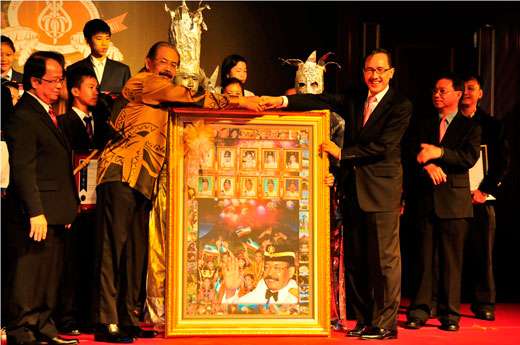Several images of orang-utans building nests in replanted trees were captured by WWF-Malaysia in the newly restored degraded area at the northern part of Ulu Segama Malua Forest Reserve (NUS), Lahad Datu, where efforts to rehabilitate wildlife habitat were initiated by Sabah Forestry Department (SFD).
These efforts give hope that the wildlife population in this degraded forest will increase before long.
Datuk Sam Mannan, the director of Sabah Forestry Department, expressed contentment upon seeing that the reforestation efforts are helping the orang-utans in NUS.
He also mentioned that the best for the survival of this species is to have well-managed forests as a home.
A mixture of native tree species were planted in NUS with the aim of enhancing quality of wildlife habitat and food sources, especially for the orang-utans.
“The declaration of restoration efforts in Ulu Segama Malua Forest Reserve on March 15, 2006 is strategically linked to the largest endangered population of the Bornean orang-utan, subspecies Pongo pygmaeus morio, in
Sabah,” said Sam.
The Ulu Segama-Malua Sustainable Forest Management, covering an area of 241,098 hectares (ha), was initiated by the state government and is jointly managed by SFD and Yayasan Sabah (YS) for the conservation and rehabilitation of habitat for endangered wildlife.
SFD has partnered WWF-Malaysia in reforestation efforts within 2,400 ha of the NUS area since 2008.
WWF-Malaysia chief technical officer (Borneo programme) Dr Rahimatsah Amat was delighted to see that the orang-utan conservation efforts in NUS were bearing fruit.
“The orang-utan is the largest arboreal (tree-living) animal in the world. They spend most of their time in trees; feeding, sheltering and travelling through the forest canopy from one tree to another. Without trees, it would be difficult for orang-utans to survive.”
Thus, his hope is to see orang-utans continue utilising the restored forest area, which has more replanted trees for food, shelter and travel.
“We’re already seeing some really exciting results from our research and monitoring team, reporting evidence of much wildlife starting to return to the restored areas of the degraded forest. Not just orang-utans but also other wildlife such as clouded leopard, sun bear and many more endangered species
There was a herd of wild Borneo pygmy elephants that passed through our reforestation site early this year but fortunately, they didn’t cause any major damage to the replanted trees. On the other hand, the elephants have left their dung at the replanted site as a tremendous natural fertiliser,” added Dr Rahimatsah.
A video clip of an orang-utan swinging on replanted trees can be viewed at WWF Malaysia’s Youtube site: http://www.youtube.com/watch?v=iO-roPfjcP4
Dr Rahimatsa also stated, “We could not have done it without the collaboration from SFD and YS as well as our generous donors who have always been a part of our conservation effort.”
Funding for the reforestation in NUS is from WWF-Germany, WWF-United Kingdom, WWF-Netherlands and WWF-Japan, including from the private sectors, i.e. Adessium Foundation, Itochu Group, Marks & Spencer, Seng Heng and Aeon Jusco.
To date, 1,096 ha of degraded forest in NUS have been replanted out of the total 2,400 ha which was allocated to WWF-Malaysia for reforestation by the SFD.
In recognition of the efforts contributed by the SFD towards managing USM under the SFM model, the Ulu Segama Malua Forest Reserve was awarded the Forest Stewardship Council (FSC) certificate by the Scientific Certification System (SCS) at the FSC General Assembly held at Kota Kinabalu in June 2011.
The certification would mean that the home for orang-utans is better conserved.
Source: Borneo Post




